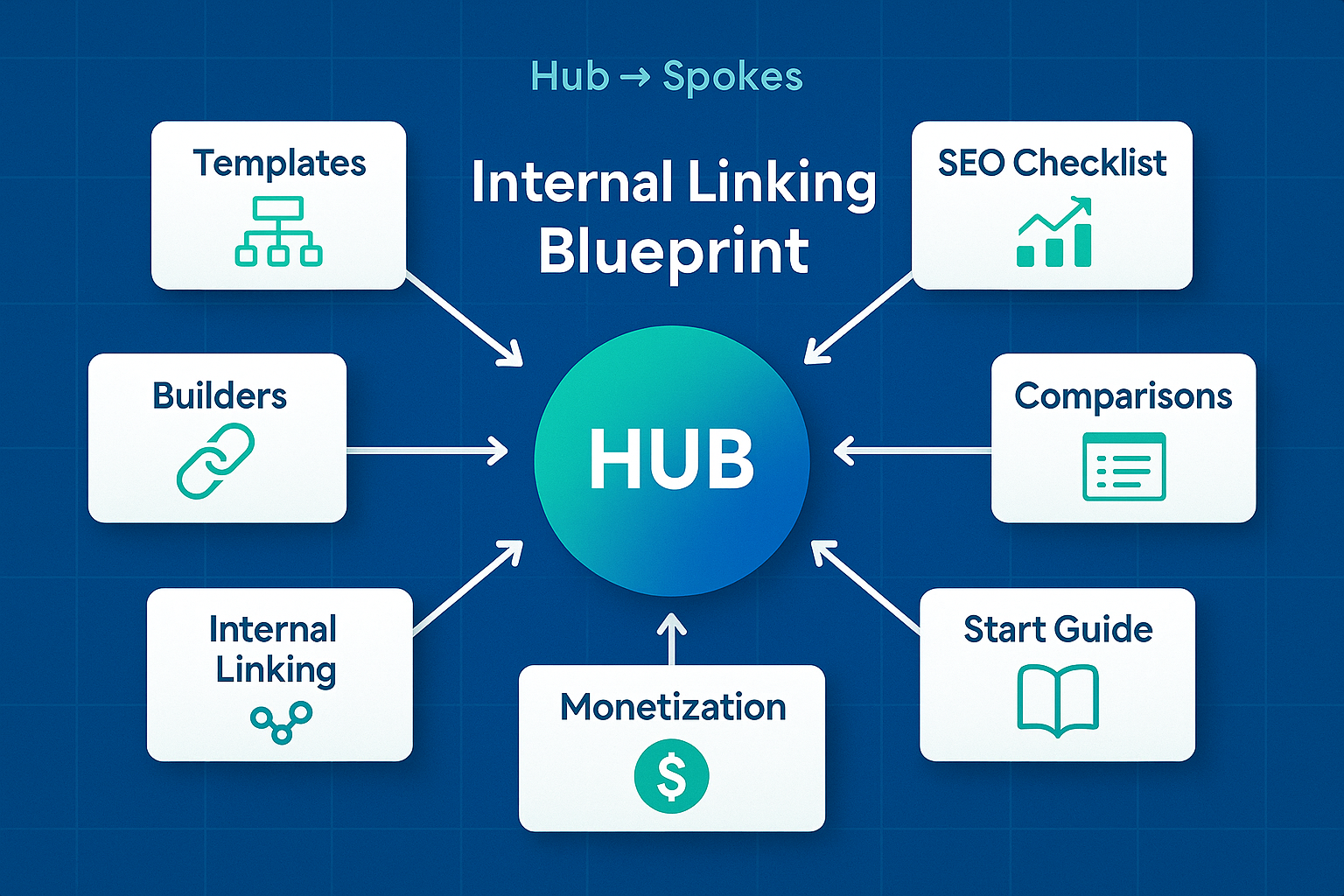
Internal Linking for Micro Websites (Hub-and-Spoke Blueprint)
Use this practical internal linking blueprint to make a small site punch above its weight. Map a hub-and-spoke structure, assign anchors, add breadcrumbs, and bake links into templates. Expect faster indexing, higher topical authority, and more clicks to money pages.
Every page should link to its hub and 2–4 relevant spokes with descriptive anchors. Hubs link to all spokes, and money pages cross-link each other with “next best” anchors. Add breadcrumbs, a footer mini-sitemap, and a related block to close the graph.
Why internal links matter on micro sites
- Faster discovery: crawlers reach new pages via contextual links and breadcrumbs.
- Topical authority: hubs consolidate signals and distribute them to spokes.
- Higher CTR: users always have the “next best click”, lowering pogo-sticking.
Hub-and-Spoke Blueprint
| Hub (pillar) | Spokes (supporting pages) | Primary anchor from spokes → hub | Cross-links among spokes |
|---|---|---|---|
| Micro Website Start Guide | Best Builders • WordPress/Framer/Webflow/Carrd comparisons • SEO Checklist • Templates • Ideas • Internal Linking • Monetization | “micro website guide”, “start a micro site”, “micro website blueprint” | Each spoke links to 2–4 siblings (e.g., Templates → SEO Checklist → Ideas). |
Every spoke links up to the hub and sideways to related spokes. The hub links down to every spoke.
Anchor text patterns
| Use-case | Good anchors | Avoid |
|---|---|---|
| Spoke → Hub | “micro website start guide”, “micro site blueprint”, “beginner’s hub” | Exact-match repeats like “micro website guide” 10× on the page |
| Spoke ↔ Spoke | “copy-ready templates”, “SEO checklist”, “builder comparison” | Generic “click here”, “read more” |
| Hub → Money Spoke | “best micro website builders”, “WordPress vs Framer vs Webflow vs Carrd” | Stuffed anchors with prices/years in every link |
Template-level links (set & forget)
Header / Nav
- Link to the hub and 2 top money pages.
- Keep it stable across the site.
<nav>
<a href="/micro-website/">Start Guide</a>
<a href="/best-micro-website-builders/">Best Builders</a>
<a href="/micro-website-templates/">Templates</a>
</nav>Footer “mini-sitemap”
- Repeat hub + 4–6 spokes (not everything).
- Use
rel="nofollow"only for external/affiliate, not internal.
<footer>
<a href="/micro-website/">Hub</a> ·
<a href="/micro-website-ideas/">Ideas</a> ·
<a href="/micro-website-seo-checklist/">SEO Checklist</a> ·
<a href="/micro-website-templates/">Templates</a>
</footer>
Breadcrumbs & schema
Add visible breadcrumbs near the H1 and output BreadcrumbList JSON-LD. Keep the path shallow (Home → Hub → Spoke).
<nav aria-label="Breadcrumb">
<a href="/">Home</a> ›
<a href="/micro-website/">Micro Website Hub</a> ›
<span aria-current="page">Internal Linking</span>
</nav>
15-minute audit checklist
- Each spoke links up to the hub with one descriptive anchor near the top.
- Each spoke links to 2–4 siblings (contextual, not just a “related” box).
- Hub links down to every spoke (short, grouped list).
- Breadcrumbs render + JSON-LD validates in Rich Results Test.
- No internal links use
nofollow(reserve for sponsored/external). - Primary money page receives ≥5 internal links from unique pages.
- Orphan check: in GSC, filter pages with 0 impressions—add 2 internal links to each.
Add a “links to add” section at the bottom of every draft. Before publishing, insert the hub link and two sibling links. After publishing, add reciprocal links from 1–2 existing pages.
Follow:
